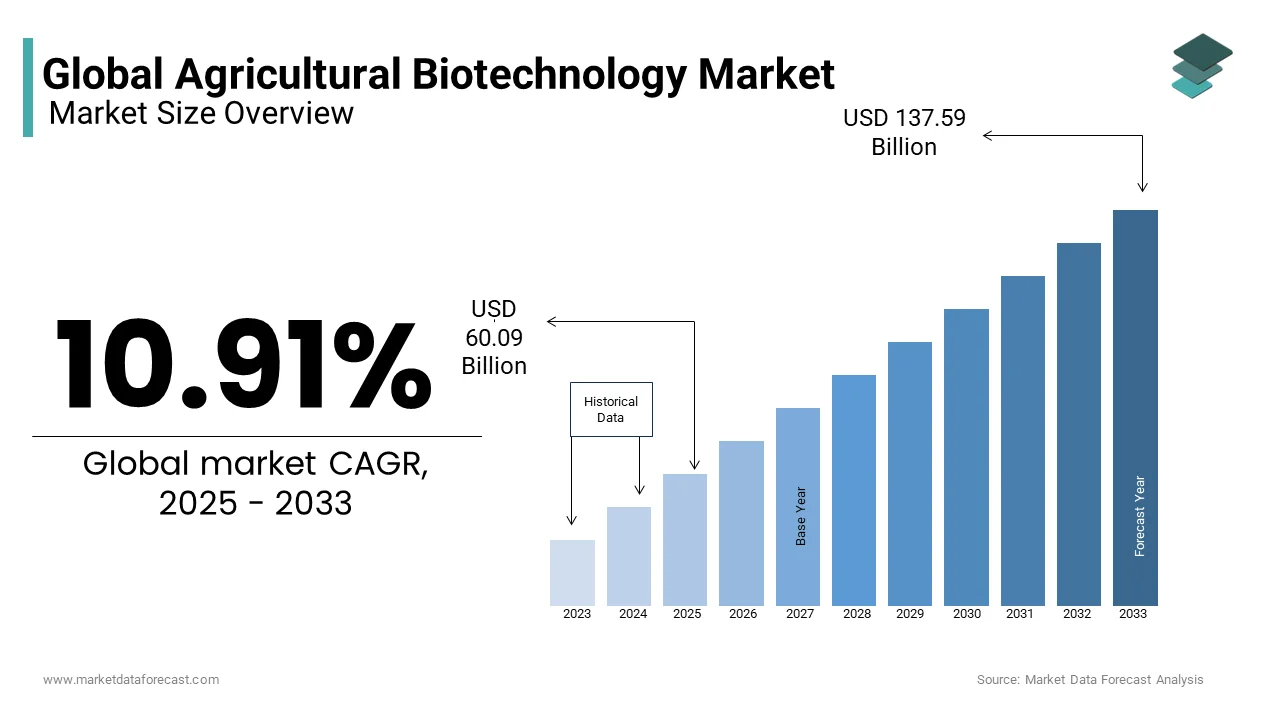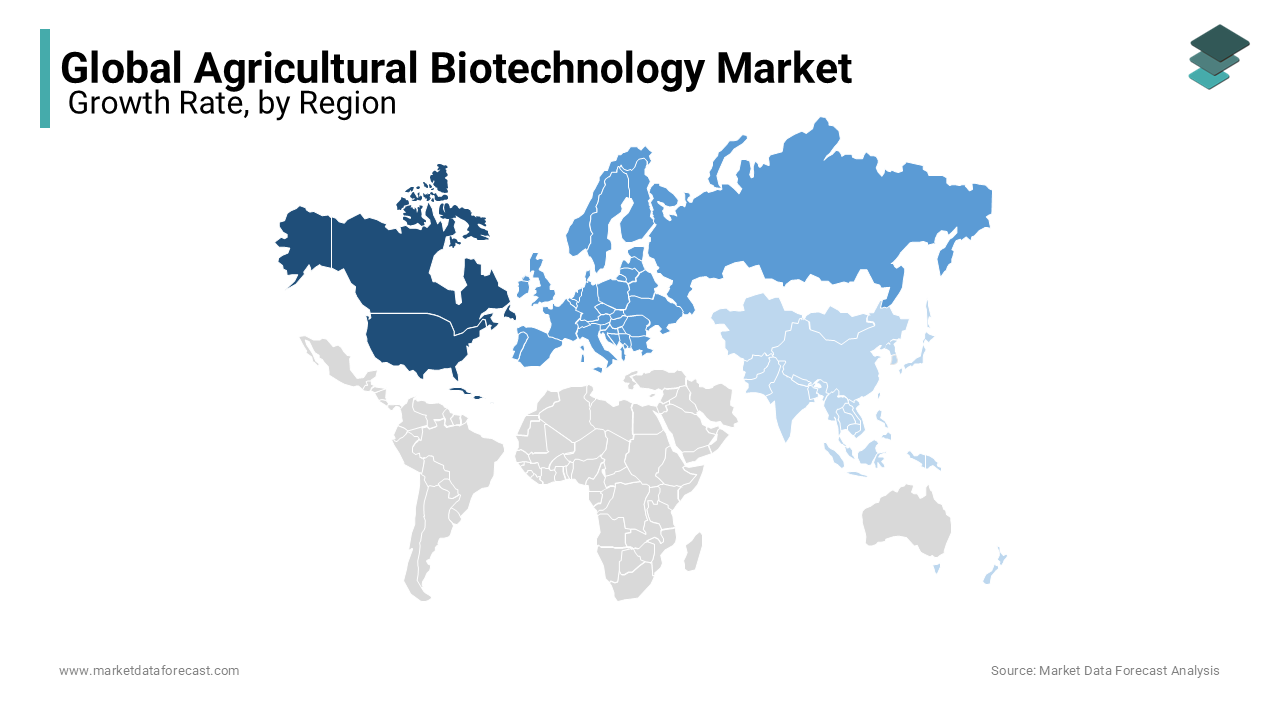Global Agricultural Biotechnology Market Size, Share, Trends and Growth Forecasts Report – Segmented By Application, And Region (North America, Europe, Asia-Pacific, Latin America, Middle East, and Africa) – Industry Analysis From 2025 to 2033
Global Agricultural Biotechnology Market Size
The global agricultural biotechnology market was valued at USD 54.18 billion in 2024 and is anticipated to reach USD 60.09 billion in 2025 from USD 137.59 billion by 2033, growing at a CAGR of 10.91% during the forecast period from 2025 to 2033.

CURRENT SCENARIO OF THE GLOBAL AGRICULTURE BIOTECHNOLOGY MARKET
Transgenic crops increase agricultural productivity and benefit producers, consumers and farmers in terms of improved yield and crop quality. Genetically modified or transgenic crops are among the top-end users of agricultural biotechnology. Agricultural biotechnology could advantage consumers and also producers and farmers.
The transgenic cropping method offers more crop varieties to consumers than cross-pollination or any natural process can offer. It provides higher & improved yield, resistance to pests, longer shelf life, and high nutritional value, due to which food grains demand-supply gap is reduced. This is expected to drive the market. An increase in the demand for biofuel due to exhausting conventional resources is further expected to fuel market growth.
REPORT COVERAGE
|
REPORT METRIC |
DETAILS |
|
Market Size Available |
2024 to 2033 |
|
Base Year |
2024 |
|
Forecast Period |
2025 to 2033 |
|
CAGR |
10.91% |
|
Segments Covered |
By Application, and Region |
|
Various Analyses Covered |
Global, Regional & Country Level Analysis, Segment-Level Analysis, DROC, PESTLE Analysis, Porter’s Five Forces Analysis, Competitive Landscape, Analyst Overview of Investment Opportunities |
|
Regions Covered |
North America, Europe, APAC, Latin America, Middle East & Africa |
|
Market Leaders Profiled |
Dow AgroSciences, Vilmorin, Certis USA, KWS SAAT AG, Monsanto, Syngenta, Evogene Ltd, Bayer Crop Science, DuPont and Others. |
SEGMENT ANALYSIS
Global Agricultural Biotechnology Market By Application

Transgenic crops are expected to account for a major share of the market revenue.
Corn and soybean are the most widely consumed crops. Soybean is expected to grow at the highest rate during the forecast period. Synthetic biology-enabled products and tools, on the other hand, are growing at a slower pace considering their smaller shares in the past.
REGIONAL ANALYSIS

The Agricultural Biotechnology market was dominated by North America. Europe is growing at a steady rate and Asia Pacific is expected to register the highest CAGR.
KEY MARKET PLAYERS
Dow AgroSciences, Vilmorin, Certis USA, KWS SAAT AG, Monsanto, Syngenta, Evogene Ltd, Bayer Crop Science, DuPont. These are market players that are dominating the global agriculture biotechnology market.
MARKET SEGMENTATION
This research report on the global agriculture biotechnology market is segmented and sub-segmented into the following categories.
By Application
- Synthetic biology-enabled products
- Tools
- Transgenic crops
- Corn
- Soybean
- Cotton
By Region
- North America
- Europe
- Asia-Pacific
- Latin America
- Middle East and Africa
Frequently Asked Questions
What is the current market size of the global c
The current market size of the global agricultural biotechnology market was valued at USD 60.09 billion in 2025
What segment are added in the agricultural biotechnology market?
The Application and region are added to the agricultural biotechnology market.
Who are the market players that are dominating the global agricultural biotechnology market?
Dow AgroSciences, Vilmorin, Certis USA, KWS SAAT AG, Monsanto, Syngenta, Evogene Ltd, Bayer Crop Science, DuPont. These are market players that are dominating the global agriculture biotechnology market
Related Reports
Access the study in MULTIPLE FORMATS
Purchase options starting from $ 2500
Didn’t find what you’re looking for?
TALK TO OUR ANALYST TEAM
Need something within your budget?
NO WORRIES! WE GOT YOU COVERED!
Call us on: +1 888 702 9696 (U.S Toll Free)
Write to us: [email protected]